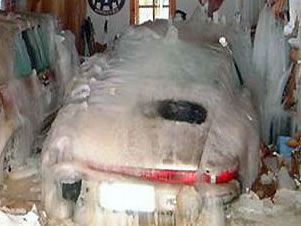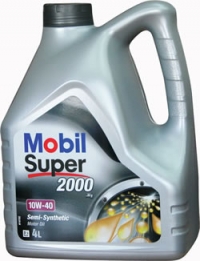Understanding oil specifications part one - Viscosity
Written by WebmasterAs a lot of you will know, I am the technical advisor to Porsche clubs, enthusiasts and even Porsche technicians around the world and one frequent issue of confusion I see time and again is regarding engine and gearbox oils, which ones to use and what the specifications actually mean.
First of all, there are a number of specifications, such as SAE, ISO, API, CCMC, SABS, JAMA and ISLS, each of these specifications are normally followed with numbers. The combination of letters, such as SAE is the "standard" or "approval" organisation, and the numbers which follow that are usually either the specification under that approval, or a listing of its approval registration number.
So in this article, we will be looking at one of these specifications in particular, the one that you are most likely to encounter, called "SAE"
What or who is SAE?
Anyone who has bought some engine oil will have bought engine oil will have noticed a number on the oil can that will say something like 20w50, a closer look will show the letters SAE in front of those numbers.
SAE is an acronym for the Society of Automotive Engineers. An organisation setup in 1905 as a society to help share information among car manufacturers, design engineers, scientists and automotive engineers, technicians and mechanics, with a primary goal of setting standards of not only workmanship, but of specifications that would be universal around the world and with all vehicles.
One of the first jobs for the SAE was to set up specifications for lubricating oils to avoid confusion, stop manufacturers having a manopoly on what oils their engines would run on, and to set a standard of oil that a manufacturer could specify as being suitable for their engines and transmissions.
Still running today, and a worldwide accepted organisation, the SAE continues in its original mission today and thankfully so.
So what is the SAE standard?
The SAE standard mainly deals with oil viscosity at set temperature ranges.
We could go into great depth about how they specify the viscosities to get to their grades and specifications, however it is important to just say that the SAE specification for grades of oil is a measure of the engine oils dynamic viscosity at a temperature range, not the at a fixed temperature such as the ISO standard. The SAE standard also takes into account how the engine oil will behave inside an engine at different RPM, pressures and temperatures, otherwise an oil could pass the SAE grading without even being suitable to be used inside an engine.
As this article is about viscosity, we will stick to this side of the specifications.
SAE test oils for their ability to remain at set viscosity at two temperature ranges. One range being at cold temperatures, typically bellow 20 degrees C (and lower) and the other range being at a maintained 100 degrees C.
Typically, the hotter an engine oil becomes, the thinner it would become, and so the lower viscosity it would have. The colder an oil would become, the thicker it would be, so it would be described as having a higher viscosity.
SAE specify which temperature range the grade is ideal for with the use of a W to indicate at test has been performed at colder conditions, grades without a "W" would indicate the oil has been specified for its viscosity at 100 degrees C.
Why at two temperature ranges?
A good example would be the oil in a gearbox of a very light weight car, with a very low performance engine, used in a very cold climate, the gearbox would likely remain at a very low temperature, even if it had been running for some time. As such, it is important to have an oil which will be at a set viscosity in the correct temperature range that it will do most of its work at. In other words, the manufacturer of this gearbox may have specified a SAE 80W oil would be ideal for that gearbox.
Likewise, in history, engines many years ago had very wide tolerances, and engine oils were not as complex as they are today. So typically in countries where the climate has seasonal changes, the engine manufacturers would have specified one oil for winter use, and another for summer use, as their main worry was making sure that in the winter, the oil would not be so thick when the engine was cold that it would not circulate around the engine, in summer when the engine may run hotter, they wanted to make sure the engine had an oil which would not be too thin when hot. So in this case the engine manufacturer may have specified a SAE20W oil for winter, and a SAE50 oil for summer use.
Later in the 20th century SAE and engine oil producers got together to develop what we now call multigrade oils, which would mean that the same engine oil could be used all year round because the engine oil, and the specifications for testing were developed to ensure that an engine oil could be stable when cold and hot, for which the above example car would now use a SAE20w50 engine oil.
What do the numbers mean?
In the SAE grade, a lower viscosity oil (or thinner oil) will have a lower number. So a 5w oil will be thinner at bellow 100 degrees C, than a 10w oil, which will also be thinner than a 20w oil.
At 100 degrees a SAE40 oil will be thinner than a SAE50 oil.
 Lets look at a few examples and compare them.
Lets look at a few examples and compare them.
Two Porsche cars have the exact same engines, but are run on two different oils.
Car one, runs a SAE5w40 engine oil, and car two will have a SAE10w40 oil.
Car one will have an oil which is thinner when the engine is cold than car two, but both cars will have the same thickness of oil once they are both at operating temperature.
Another example to compare.
In this example, car one has a SAE10w40 and the other has a SAE10w50 engine oil.
In this example you will find that both cars have oils of the same viscosity or thickness when their engines are cold, but the second car will have a thicker engine oil when both cars are at operating temperature.
Why do all cars not all have the same engine oil?
The problem is, all engines are different, a Porsche Boxster engine needs a much different oil than a 1960's ford may use. The Boxster will run hotter, the oil pump and all internal engine components will have different requirements from the engine oils.
Clearances, or gaps withing surfaces which rub within the engine, such as where bearings are, in a Boxster engine are much tighter than in a 1960's Ford pinto engine. So the oil needs to be a little thinner at all engine temperatures. As such, the ford Pinto may use a SAE20w50 engine oil, where as the Boxster in a particular climate may use a 5w40 engine oil.
Another issue is that a modern engine has hydraulic components within the engine which use the engine oil as their hydraulic fluid. Items such as variable cam timing pistons and gears, hydraulic expanding cam followers and much more. A thicker oil, or thinner oil could cause these items to behave in a different way. A thinner oil would cause these items to leak more (which may be a design feature) or with a thicker oil may not leak enough, and therefore would not be able to release pressure and contract as they have been designed to do.
So, typically, a modern engine will use a thinner engine oil to a older design of engine.
But also, in theory, as an engine wears, some clearances open up and may require a thicker engine oil to allow the engine to continue good service.
 Why do car manufacturers often specify different engine oils in different regions of the world?
Why do car manufacturers often specify different engine oils in different regions of the world?
Obviously the same model of car may be sold to both Australia and Alaska. In Australia, the typical coldest temperatures may only be as low as 5 degrees, where as the hottest temperatures may be as high as 50 degrees C.
In Alaska, the warmest temperatures may be 20 degrees C, but in winter the temperatures may be as low as minus 50 degrees C.
So in Alaska, and its average temperatures, Porsche may specify the ideal engine oil to use as being a 0w40 engine oil, but in Australia they may specify a 10w40 engine oil.
The more observant of you may notice that both engine oils specified end with a 40, meaning that they are both the same thickness at 100 degrees C, which when you think about it, is quite correct because the second number is for an engine at operating temperature, which will be the same for a car in Alaska or Australia, it is only the cold temperature which makes a difference.
I have been told my old Porsche can use the newer oils used by current Porsche models, is this true?
The Porsche models of today use a SAE0w40 or SAE5w40 engine oil in temperate climates such as most of Western Europe and most of the mainland USA. Because this oil is quite thin when cold, it is suitable for most climates around the world without modification. Although, if the car was in the middle east or Nevada in the USA, I personally would be tempted to use the SAE5w40 or even a SAE10w40 engine oil to avoid problems with then engine oils when the car is cooler.
Because for the last 10 to 15 years (at time of writing in 2013) all the Porsche models have used a SAE0w40 or SAE5w40 engine oil, Porsche main dealers no longer wish to stock the oils originally specified for the Porsche models of times gone by, such as Air cooled 911's, 924's, 944's, 968's and 928's. So they will say that their oil is Porsche approved (which it is) and that it will be the oil recommended for your Porsche.
However, if you check your original owners manual for a pre 1998 model car you will see the orignal engineers who designed you car provided a temperature chart along with which oils should be used.
In this chart, you will probably find that in a temperature climate, where temperatures rarely go bellow -10 degrees C, and rarely above 40 degrees C, the engine oil ranges that should be used are between a SAE10w40 through to a SAE20w50.
From experience, all pre 1998 models tend to run much better, last longer and consume less oil when they are using an engine oil inside this range. Strangely enough, the Porsche engineers that designed your earlier model Porsche, really did know what engine oil would be best for it.
Conversely, it is common that we see a pre 1998 model Porsche which is consuming more engine oil than it should, or is suffering from issues of occasional or constant blue exhaust smoke, that the cause has been the use of a SAE0w40 or SAE5w40 engine oil, as recommended by the Porsche dealers.
You can draw your own conclusions from why the Porsche main dealers are choosing a thinner oil for your old Porsche, but I personally suspect it has more to do with using the oil they have in stock for the current models, than it has to do with constructively trying to cause you problems.
In theory, no long term damage should be caused by using to thin an oil in your earlier Porsche, especially if the engine is in perfect condition, however, I would normally recommend increasing the viscosity of the engine oil by one point on a Porsche after it has covered maybe 100,000 miles anyway. otherwise the thinner oil can get past seals, gaskets and indeed past the piston and be burned by the engine, causing blue smoke and excessive oil consumption.
Although if engine oil is getting past the piston, other issues can then be caused, such as failed/clogged catalytic converters, piston rings gummed up with carbon produced by oil burning and many other problems. So my advice stands, please avoid using a SAE5w40 or thinner oil in a pre 1998 Porsche (other than the few Boxsters made just before 1998)
Performance and engine oil viscosity.
Whatever engine oil you use, the oil pump needs to suck up the engine oil, and pump it around the engine, the thicker the engine oil, the more effort the oil pump will need to expend in doing its job, so there is an argument that performance and fuel ecconomy can improve with using a thinner oil. However, the difference in performance and ecconomy of a SAE0w40 and a SAE10w40 engine oil will only be before the engine has warmed up, after that point, both engine oils will have the same viscosity and therefore resistance to the oil pump.
However, in a race car, where every improvement in BHP is important, using a thinner oil for the second number, can make an improvement in performance, although very tiny. So the use of a SAE5w30 engine oil rather than a SAE5w40 engine oil could provide a tiny improvement, and that tiny improvement may result in a car being just that 0.5 of a second quicker over the entire length of a race, which may give it the edge to be that one car length ahead of the competition. However a race car should have an engine rebuild on a regular basis, anything from every race to every season. Where as you might be annoyed with needing a yearly engine rebuild on your road going Porsche!
Does the engine oil viscosity degrade over time?
In a hot running Petrol engine, such as a Porsche engine, the oil will become contaminated not only over time as the length of hours the engine has run for with the oil increases, but also as the oil is attacked by humidity from the changes in weather and seasons. These two effects are caused by mechanical attack of the oil breaking down the chains of molecules in the oil, but also from chemical attack from the contamination of the oil from the process of fuel combustion.
The problem with seasonal changes in humidity and temperature causes condensation to form within the engine, as well as the contact of the engine oil within your engine coming into contact with the humidity in the air within the engine. This is obviously water, which in itself is usually a harmless chemical compound (other than causing corrosion) however when water combines with many of the nasty chemicals within the engine oil, both that are supposed to be there, and are there from combusion contamination, can combine to cause some very nasty chemicals which will attack the engine oil and the components within your engine.
So whatever grade of engine oil you use, one millilitre of contamination is one millilitre of contamination, which will destroy the engine oil over either time or mileage, which is why we always recommend at very least, one oil change per year, but in an ideal world, every 6 months.
So what is next?
Now we have covered the SAE specification and viscosity, we will next tackle the tangled subjects of oil components, other specifications, oil additives and much more... look out for the other parts of this series of articles on the JMG Porsche website soon.
Webmaster
Some say he is the love child of a Cray XMP supercomputer of the 1980's and a Sinclair C5. That he can hear the tinkling of binary traveling through the internet.
All we know is he is the webmaster of JMG Porsche.




